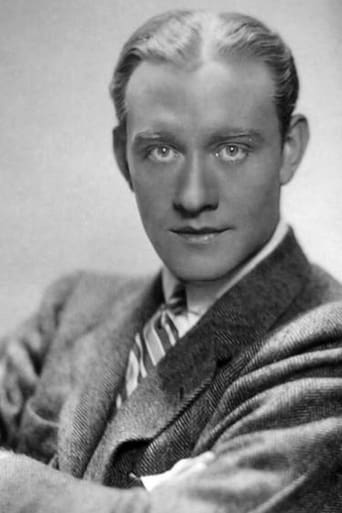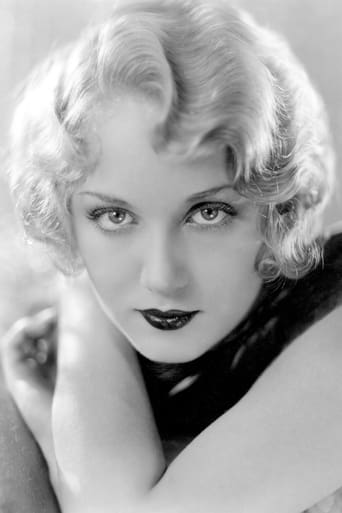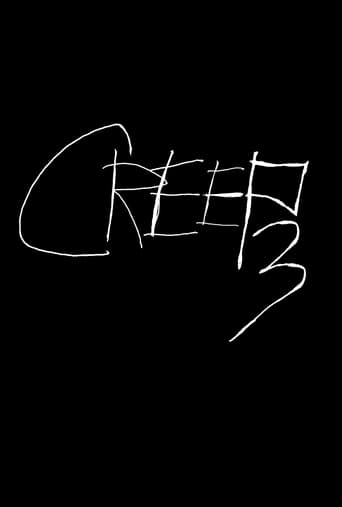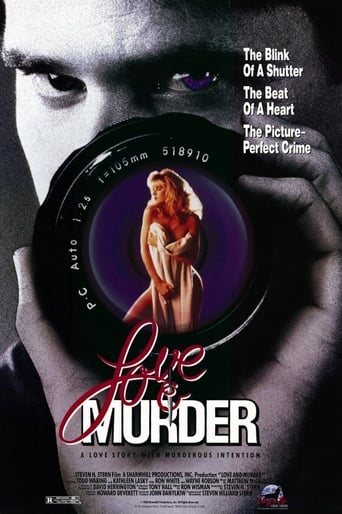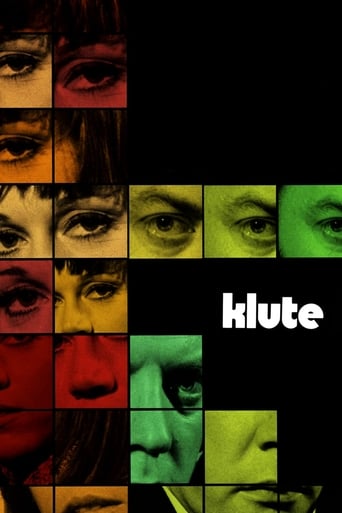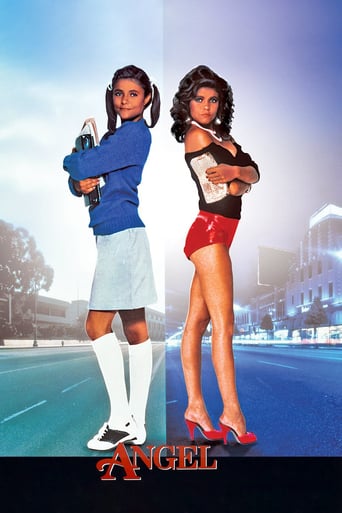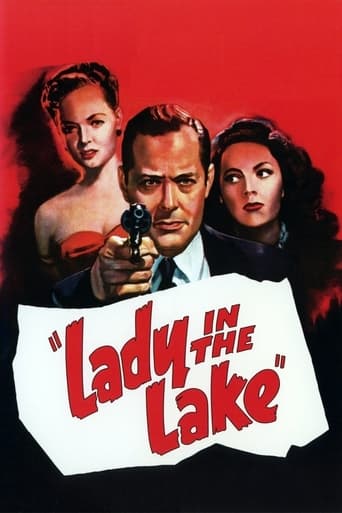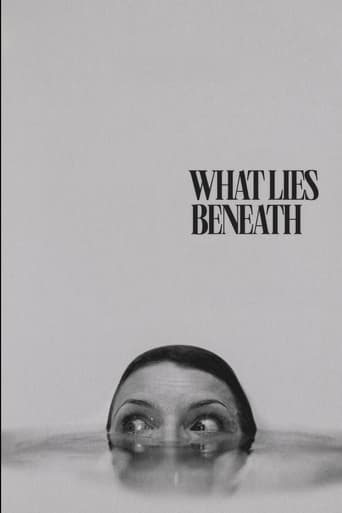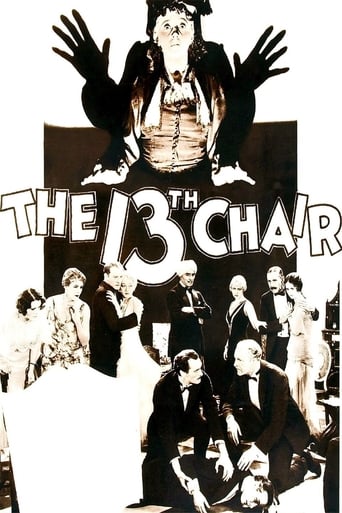

The Thirteenth Chair (1929)
Although his murdered friend was by all accounts a scoundrel, Edward Wales is determined to trap his killer by staging a seance using a famous medium. Many of the 13 seance participants had a reason and a means to kill, and one of them uses the cover of darkness to kill again. When someone close to the medium is suspected she turns detective, in the hope of uncovering the true murderer.
Watch Trailer
Cast
Similar titles

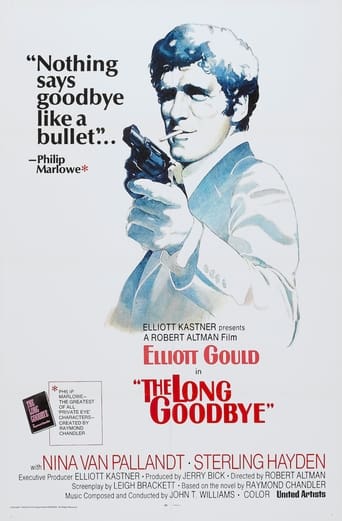
Reviews
I think this is a new genre that they're all sort of working their way through it and haven't got all the kinks worked out yet but it's a genre that works for me.
I gave it a 7.5 out of 10
The plot isn't so bad, but the pace of storytelling is too slow which makes people bored. Certain moments are so obvious and unnecessary for the main plot. I would've fast-forwarded those moments if it was an online streaming. The ending looks like implying a sequel, not sure if this movie will get one
There is, somehow, an interesting story here, as well as some good acting. There are also some good scenes
Looking at the reviews, I saw that there was a group that loved the film and a group that hated it. When I see this kind of sharp dichotomy, I like to comment. I first saw the overall rating as 5.1, which seemed unfairly low. I liked the film because it was very superior writing and I was wowed by the performances of Margaret Wycherly and Bela Lugosi. The film was taken from a play with the dialog mostly intact. The writing for the play, as well as the play itself, was a critical and popular success - as was the film. Margaret Wycherly was a well-known and highly respected British actress who also appeared in the play. All reviews are valid if they honestly and clearly describe the reviewer's reactions. I don't like murder mysteries, but I took a chance on this one because I liked the story outline and I was pleasantly surprised. I happen to hate horror pictures so I was not a fan of Bela Lugosi, but he was great in this non-horror role. One negative review called it too "stagey" and indeed that's a valid observation as it was a stage play adapted to film. I have seen stage plays that were filmed as they were played on stage, but the filmed version never seemed right - however, this stage script was very well adapted to film - also keeping the high quality script intact. Perhaps, the most telling negative comment was that the film was "dull". And indeed if one really likes standard murder mystery films with lots of physical action (or if one is just in the mood for such), one might find the film "dull". The reader of reviews needs to find which reviews reflect his/her tastes and criteria and go with that review.
Not just your ordinary filmed stage play, Tod Browning's production, "The Thirteenth Chair", is your ineptly filmed stage play. In fact, it is probably the most ineptly filmed stage play of all time. This was not director Tod Browning's fault, nor can the blame be laid at the feet of the players, nor the scriptwriters, nor photographer Merritt B. Gerstad, nor film editor Harry Reynolds. The gentleman entirely responsible for this debacle turns out to be the brother of Metro-Goldwyn-Mayer's reigning star, Norma Shearer – a gentleman by the name of Douglas Shearer who literally called the shots on this production. Unfortunately, director Tod Browning did not feel he had enough clout to tell Mr. Shearer to get lost – as Victor Fleming, for example, did to the sound men at Paramount when he was making his first talkie. Thus there are long pauses here and there because Mr. Shearer didn't know how to edit sound and therefore forced the players to wait at the beginning of each reel until the visuals were loaded and the film had reached a point where the sound track could cut in. Then Mr. Shearer or his assistant would wave a handkerchief or a flag (depending upon which of the players is telling you this story – maybe he used both) and the actors would start talking. Despite all the cards laid against them, however, Margaret Wycherly and Bela Lugosi come out of this quagmire with all flags flying. Admittedly, they have the best lines and best bits of business. As for the murder mystery – I saw the movie on TCM only two hours ago and already I've forgotten who murdered who, but I can tell you for a fact that neither Margaret nor Bela did it!
This seems to have been the first major film role film for Bela Lugosi. He dominates the film entirely, with tremendous confidence and panache. Two years later, he and the same director, Tod Browning, would make their famous horror classic 'Dracula' (1931) together. This film is based on a stage play by Bayard Veiller, whose wife, Margaret Wycherley, played the medium both on stage and in the film, to great effect. Since talkies only commenced the year before, this 1929 film does very well in the sound department. What is really terrible about it is the editing, some of the worst any feature film ever had: a woman gets up from her chair and exits frame and we wait for some time, then we cut to the next frame and wait an endless age for her to enter that frame. Really appalling! Tod Browning either had no control over this process or had not learned to direct properly yet. Despite the slow pace and creaky nature of the production, the film nevertheless manages to be intriguing in its excellently complex mystery plot. It is one of those 'people in a room in the dark' films: whodunnit? There are plenty of surprises. The story is ostensibly set in Calcutta, under the Empire, although shot entirely in a studio. It is an interesting study of how British Empire types behaved in the 1920s, hence of considerable social history interest as a 'document'. (They don't come out of it well, being so arch, false, and over-mannered that one does not regret their passing.) The main action centres round a seance and the activities of a medium, in connection with trying to solve the murder of someone who was 'an out and out rotter'. Despite its shortcomings, this film is still entertaining and worth watching.
This isn't a typical Tod Browning film. It's more or less a very basic filming of a stage play (I gather; I don't know that for sure, but it feels very stagey) about a group of rich people who hire a medium to find out who killed their friend (and, to some of the group, an enemy). When they go into their seance, right as the name of the killer is about to be spoken, one of the men in the circle, the one who was succeeding at questioning the medium, is stabbed in the back. They then call a detective (Bela Lugosi) who grills them, trying to discover who murdered both of these men. I don't generally like whodunits, especially the Clue variety, where a detective gathers all the suspects in a room and attempts to root out the real killer, but The Thirteenth Chair is exceptionally written. The characters, and there are many, are quite well developed. The climactic scene, while asking that we suspend our disbelief, is truly suspenseful. See this gem if you ever get the chance. 9/10.
